What are the most popular Counter-Strike maps?
Old classics, fancy CSGO maps, and some brand-new CS2 experiences have all made it onto the list. Here are the most popular Counter-Strike playgrounds for you to try.


BTC: $ 67945.9 (1.41%)

ETH: $ 3258.25 (-0.32%)

LTC: $ 71.26 (0.35%)

DOGE: $ 0.1339 (3.55%)
Share
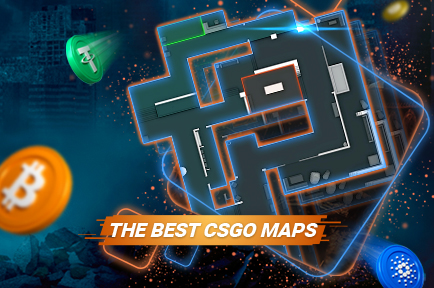
Old classics, fancy CSGO maps, and some brand-new CS2 experiences have all made it onto the list. Here are the most popular Counter-Strike playgrounds for you to try.
From 1.6 to CS2, the best Counter-Strike maps have survived across the ages to entertain and amuse players across more than two decades. No other gaming franchise can boast such incredible longevity, and it’s a testament to its incredible formula that some of the oldest maps ever made are still around and more popular than ever. Of course, adjustments have been made, and an esports pro might vouch for something else that the common man, but one thing is for sure: the end results are nothing short of incredible.

If you played even a little bit of Premier Mode in CS2, you know that Mirage is by far the most commonly picked map in regular competitive play, seemingly across all regions and skill levels, amounting to over a quarter of all matchmaking games played according to statistics.
It’s easy to understand why that is the case once you consider the map’s layout: it’s quite pug-friendly and allows room for skill expression for lone wolfs, you can create space and make plays in solo play for great impact, and there are varied sightlines and battle locations available with a variety of elevations, and most importantly, it’s always been quite balanced between the CTs and the Ts, so a poorly played first half won’t make you immediately gravitate towards the surrender (or vote kick) buttons.
Originally known as Strike in the 1.6 days, Mirage was remade by Valve entirely for Global Offensive, replacing the old, Italy-esque visual style it the current Moroccan theming. “It’s a classic, and we’d be nuts to tinker with the core gameplay of something that already works so well,” the devs wrote at the time, and they stuck to this mantra ever since. Mirage has received a significant facelift in CS2, but its layout has remained virtually untouched across the years since its introduction as a CSGO map.
It is also the most storied maps when it comes to competitive play. Valve has never removed it from the Active Duty pool, meaning it is the only map in the history of the game to have been played at every Major tournament from 2013 to 2022 – proving that despite its pug-friendly nature, it offers more than enough for high-level strategies and coordinated team plays.

Chicken, bells, towers, Banana, Library, bastards camping in the church: Inferno is another one of those old stalwarts that has been with us since the 1.1 days, Inferno saw many adjustments and redesigns across the years but has never fallen out of favor. The biggest leap came from 1.6 to Source, with its CSGO map edition offering mostly just graphical adjustments in its initial form (though, interestingly enough, Valve decided to swap the names of the bombsites).
In the spring of 2016, Inferno was removed from the Active Duty Pool, prompting a seismic shift in casual and competitive play alike, while the devs gave the map a long overdue facelift and redesigned a few elements. It returned in its exciting new form in February 2017, with more room and less clutter, streamlining some locations like the clunky hidey room in the apartments. (I miss camping there, not going to lie.)
Much like Mirage, Inferno was also treated as a “touchstone” map for the move to CS2, mostly offering graphical adjustments instead of a complete rethink, though many of the cover elements have been removed on the A bombsite (and over on B, the construction has finally been finished and the place is now a genuine church.)
Inferno is the other super-popular Counter-Strike map alongside Mirage, in competitive and casual modes alike, making up over 21% of the Premier Mode games. It often ends up as the decider in closely-fought CS esports matches, and it always delivers epic plays and excitement.

Originally introduced as a CSGO map, Overpass was added to the game in the December 2013 WWinter Offensive Update alongside Cobblestone. Unlike its castle-themed counterpart, Overpass turned out to be much more durable in terms of longevity and competitive play, but, oh boy, was the map a complete mess on release.
Set in Germany, featuring an overpass with a park on the upper site and a canal on the lower one, it is one of the more complex maps to play in the game, requiring more coordination and teamplay to perform well than the previously discussed ones. As with any map that involves verticality, it was a nightmare to balance properly for a long while, with legendary exploits like Fnatic’s “olofboost,” a pixel-walking triple boost, even earning itself a cheeky reference in future versions of Overpass – after it was promptly patched out, of course.
By the time its CS2 map version rolled around, Valve managed to shave off all its rough edges and used the Source 2 engine’s impressive capabilities to completely redesign the map from scratch without causing any gameplay complications.
Overpass is currently the third-most popular competitive map in Premier Mode in CS2 play, with 15.5% of the total playtime, a significant increase from 5.6% in the CS:GO days.

It’s the map from the CS:GO trailer! The one with 22 million views!
It’s where they try to blow up a nuclear reactor! Nuke is one of the more polarizing bomb defusal maps in Counter-Strike, and it’s one with a storied history, being one of the earliest-ever maps of the de_ game mode. The Source version of the map did away with the original’s Surface Tension-inspired design from Half-Life 1, and made it into Wallbang City, population many dead players.
The CS:GO version of the map narrowed and removed some of the pathways, making the map feel more claustrophobic and very difficult to navigate on the Terrorist side. Nuke was revamped in 2015, receiving a graphical overhaul that was very impressive-looking at the time. Gameplay-wise, one of the vents was removed, and the stupid little hiding room on B site was done away with, but high-level players nevertheless found it easier to perform well on the T side of play after this update than they did in the past.
In CS2, the map looks gorgeous with the new lighting and reflections: It was classified as an “upgrade map” by Valve, where they did some pretty significant visual work without greatly adjusting the layout for gameplay purposes.
Much like Overpass, Nuke has also gained in popularity going from CS:GO to CS2, making it the fourth-most popular map with almost 13% of the play count. In esports, it’s very much a map for specialists thanks to its interesting vertical design that features overlapping bombsites, and while some teams put up incredible win streaks on it, others treat it as their permaban.

Featuring a 51-story skyscraper under construction, Vertigo used to be an absolute meme map, which Valve has tried to wrangle into a competitive thing in the twilight years of the Global Offensive era, with some success.
Elevation plays an even more important role on this map than on Nuke, with literal floors separating the bombsites and the two teams. In earlier versions of Vertigo, CTs could pull off a trick jump off the side of the building to land straight in the enemy spawn, with hilarious results. Needless to say, oddities like this had to go once the developers decided to make this a competitively viable CSGO map.
In 2017, the map was removed from CS:GO in its entirety due to its low playtime, and its completely reworked version was brought back in early 2019. It remains a controversial addition ever since, as the gameplay never quite worked right for player tastes despite the continuous changes made to the map. Some pro players, like G2’s NiKo, profess a real hate for Vertigo, and it’s no surprise that you almost never see him and his ilk play it.
Funnily enough, the pre-2017 version of the map was such a specialized meme that some players reached the Global Elite rank exclusively by playing it, figuring out all the quirky ins and outs to propel themselves to a rank their real skill didn’t warrant whatsoever. They were known as VertiGlobals, named after the highest rank in the game, The Global Elite.
Nevertheless, Vertigo also benefited from the leap to CS2, going from 4% of matches played to just over 10%. It remains an occasional choice in competitive play, recently seen at the BLAST Premier Fall Finals, where Team Vitality used it to great effect to surprise FaZe Clan and end their 18-series win streak.

One of the newest additions to the Counter-Strike family, Ancient was released as a CSGO map in December 2020, but its visual fidelity immediately made it clear that it was designed with Source 2 tools and was back-ported to Global Offensive. (In some ways, this was one of the earliest indications that CS2 was actively in development.)
Ancient features the same sort of theming as the old Aztec map, and some even refer to it as “Aztec 2.” It features a fairly traditional layout, with some extremely narrow and labyrinthine pathways on approach to the bomb sites. Initially, the timings were quite off on the map and were extremely one-sided in favor of the defensive side, and while they still remain at an advantage, a combination of extended pro play and the upgrade to CS2 made it a more than workable competitive map, and it now produces some real bangers in Counter-Strike esports, making it the most-played map at the tail end of 2023.
As far as Premier Mode and matchmaking are concerned, it’s not one of the most popular Counter-Strike maps: the downside of having literal decades of knowledge about certain options is that players are reluctant to truly explore and experiment with new ones, which is why Ancient’s play rate is only at 8% in CS2, which is still admittedly an improvement from the 2.13% it used to be in Global Offensive.

The latest competitive map added to the game at the time of writing, Anubis is an impressive-looking Egyptian-themed affair that was originally created by three community members before Valve purchased it from them wholesale and made it their own for a cool $450,000 in total in November 2022.
The map is rarely seen in competitive play among us mere mortals with a paltry 4% play rate, but pros have clearly taken to it, making it the second-most-played map in CS2 esports events in the autumn/winter of 2023, just behind Ancient.
You may have noticed that every Active Duty map discussed above has seen its play percentage rise as we went from CS:GO to CS2. There’s a reason for that – and it is a very dusty one.

Yeah. The granddaddy of them all, the elephant in the room, the Counter-Strike map for many. There’s elegance in its simplicity and power in its accessibility. Dust 2 is the quintessential CS experience for multiple generations of players and by far the most popular map in the franchise’s storied history. It needs no introduction, no explanation. Rush B, do not stop, my friends.
That said, we must concede that there are limits to higher-level tactical options on the map, and even if there weren’t, it’s just simply been, well, played out after over two decades of near non-stop grinding by casuals and pros alike. While Dust 2 did get a facelift from its CSGO map version heading into Counter-Strike 2, it’s not a part of the Active Duty map, and you can’t play it competitively if your goal is to rank up in Premier Mode – and by the same token, it is not present in the map pool of CS2 esports events, either.
Of course, you can load it up any time and get a pick on long or play some mind games around the double doors. You will always find takers for some nice little Dust 2 gameplay until the end of the world as we know it.

Choo-choo! Train was one of the fundamental maps in the 1.6 and Source days, and like many others on this list, it received multiple upgrades when it came time for its CS:GO iteration. However, its aggressive chokepoints, narrow sightlines, not to mention the finicky nature of ladders in the Source engine, made it fall out of favor for amateurs and pros alike, and it has not been returned to the Active Duty pool for the early days of CS2.

One of the few non-Valve creations that made it into competitive play and the Active Duty Pool with 2014’s Operation Breakout, Cache is maintained entirely by its creator, Shawn “FMPONE” Shelling, who originally created the map for Source, with the CSGO map remake featuring a better balance. Set in Pripyat, with the Chernobyl Power Plant in the background (fun as it would be, it doesn’t mesh with Nuke, as that map is either set in Germany or the US, depending on which version you play).
The map saw a big remake in 2019, which was very demanding hardware performance-wise with all the added greenery, and it was a big part of why the map’s fallen out of favor somewhat. With FMPONE working on Santorini, it will be a long time until Cache gets a CS2 version, and who knows whether it will ever return to the competitive pool? Only time will tell.
Now you should have a good understanding of what you’re queueing for when you’re playing CS2 matchmaking on one of the game’s many maps.
If you’d like to dive deeper into competitive CS and everything esports, the Bitsler blog has got you covered: from event coverage to gameplay analysis, you will find yourself many topics to explore, like the best CS2 crosshairs and how the Counter-Strike ranking system works. Be sure to check it out!
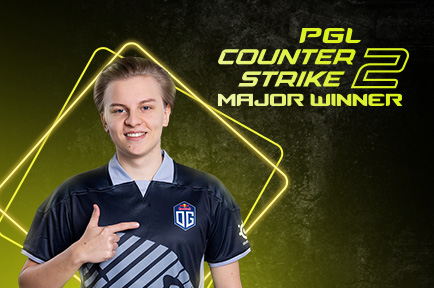

Esports
April 23, 2024
Who is Aleksib, the PGL CS2 Copenhagen Major 2024 winner?
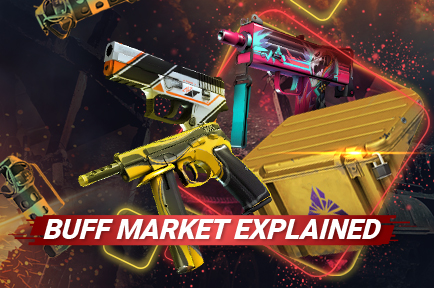

Esports
March 27, 2024
What is the BUFF CSGO Market for Counter-Strike?
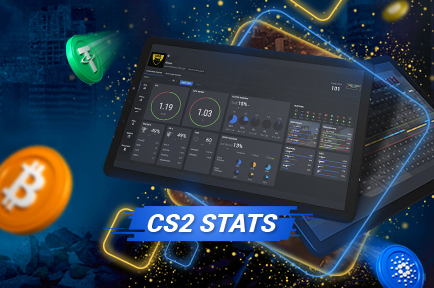

Esports
March 19, 2024
CSGO Stats, explained
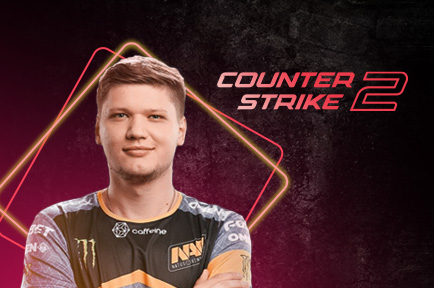

Esports
March 19, 2024
Who is s1mple, the greatest Counter-Strike player?
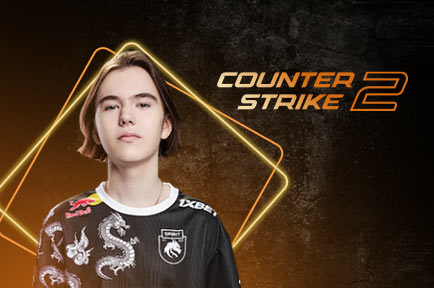

Esports
March 11, 2024
Who is donk, the new Counter-Strike superstar?
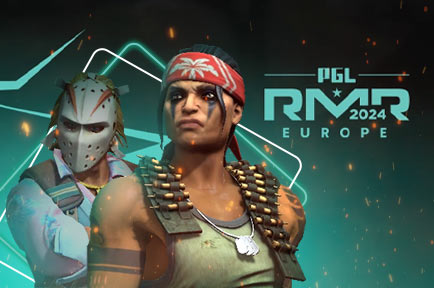

Esports
February 28, 2024
Everything you wanted to know about the CS2 Copenhagen Major RMRs
The future of gaming is here, we are the number one bitcoin casino. Our range of casino-slots consistently make the top ten across the bitcoin casino world. Bitcoin gambling has seen a rise in popularity through 2017 and 2018, we are at the forefront of cryptocurrency gaming, providing a fun, fast and fair experience for the bitcoin gambling enthusiast.
